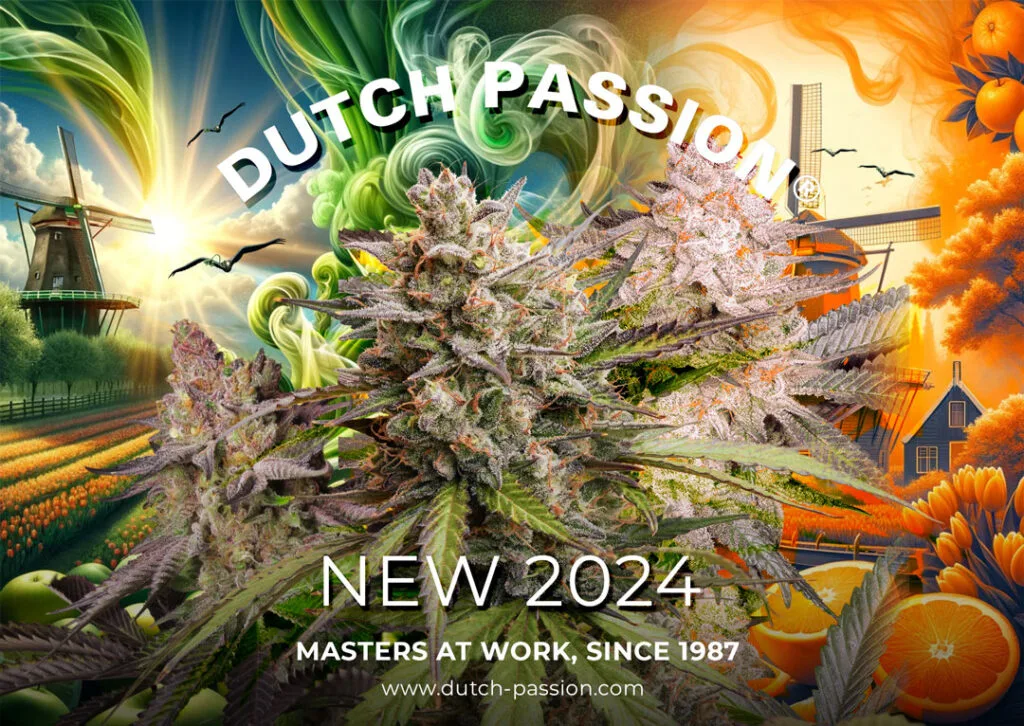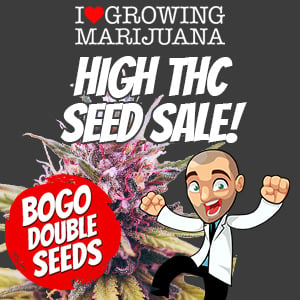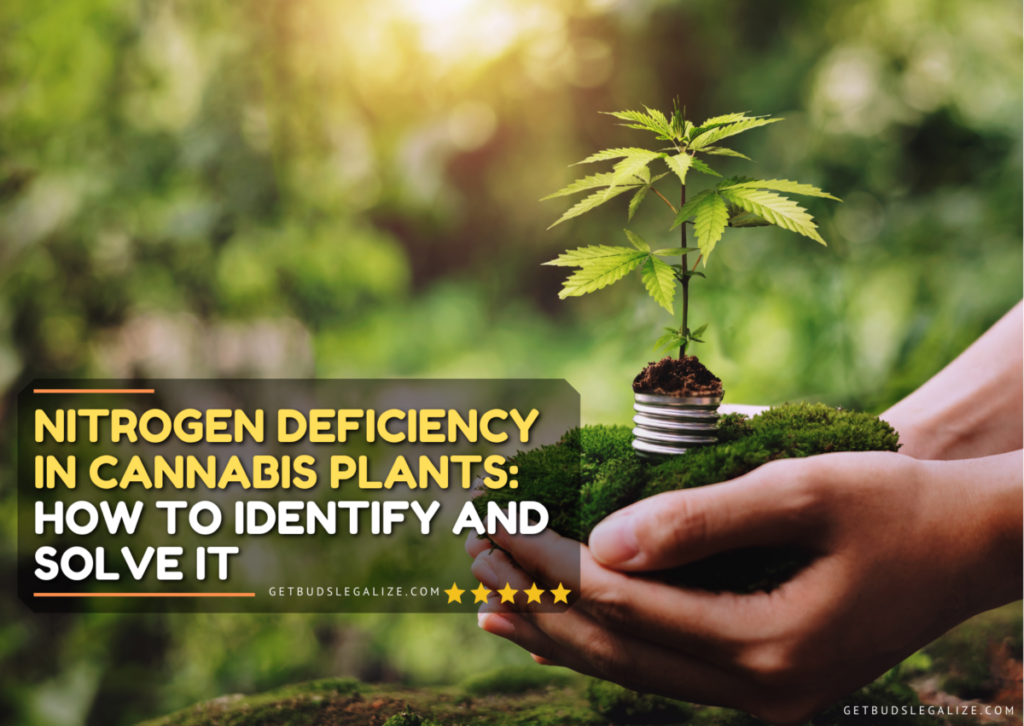Need Help with Cannabis Plant Damage? Here are Some First Aid Tips
Rain can be a blessing or a curse for outdoor marijuana growers. Too much rain can cause serious problems such as mold, bud rot, nutrient leaching, stem breakage, and root rot. If you live in a rainy climate or experience heavy rainfall during the flowering stage, you need to act fast to save your precious plants. In this blog post, we will share with you seven first-aid tips to help you rescue your outdoor plants from rain damage.
Here Are Some First-Aid Tips to Help You Rescue Your Outdoor Plants from Rain Damage:
1. Shake off the excess water from your buds:
After heavy rain, your buds may be soaked with water, which can increase the risk of mold and bud rot. To prevent this, gently shake off the excess water from your buds as soon as possible. You can also use a soft cloth or paper towel to dab them dry. Be careful not to damage or bruise your buds while doing this.
2. Dry your plants with a fan:
If the weather is still humid and cloudy after the rain, you may need to use a fan to speed up the drying process. Place a fan near your plants and let it blow air over them for a few hours. This will help evaporate the moisture and improve the air circulation around your buds. Make sure the fan is not too strong or too close to your plants, as this can cause windburn or stress.
3. Repair stem breaks and support damaged branches:
Rain can also cause physical damage to your plants, such as stem breaks and branch bending. If you notice any broken stems or branches, you can try to repair them using tape, splints, or ties. Wrap the tape around the broken area and secure it with a splint or a tie. You can also use stakes, cages, or trellises to support damaged branches and prevent them from sagging or snapping.
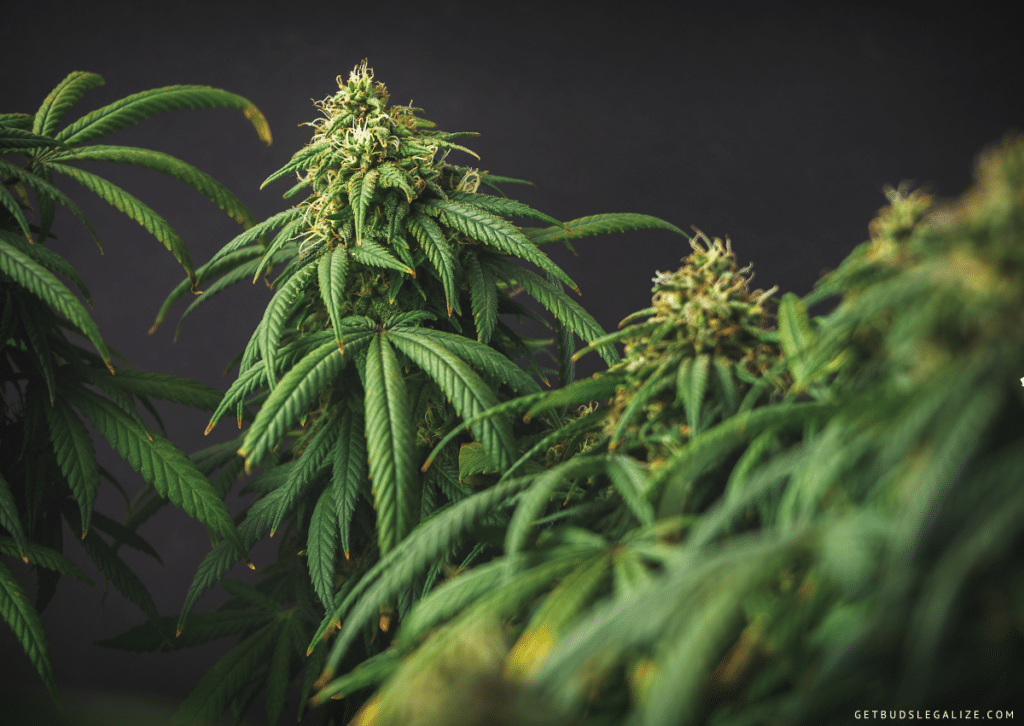
4. Cover exposed roots and replenish the soil:
Heavy rain can also wash away the soil around your plants, exposing their roots and making them vulnerable to pests and diseases. To protect your roots, you should cover them with fresh soil or mulch as soon as possible. You can also add some organic amendments such as compost, worm castings, or bat guano to replenish the nutrients that may have been leached by the rain.
5. Prune severely damaged parts and sanitize the wounds:
Sometimes, the rain damage may be too severe to repair, and you may need to prune away some parts of your plants. This can include dead, dying, or infected leaves, buds, stems, or branches. Pruning will help prevent further infection and improve the airflow and light penetration in your canopy. Make sure to use clean and sharp scissors or pruning shears and sanitize the wounds with hydrogen peroxide or alcohol.
6. Apply potassium bicarbonate to prevent fungal infections:
One of the most common problems caused by rain is fungal infections such as powdery mildew and bud rot. These can ruin your entire harvest if left untreated. To prevent fungal infections, you can spray your plants with a solution of potassium bicarbonate (also known as baking soda) and water. Potassium bicarbonate is a natural fungicide that can kill spores and raise the pH of your plant’s surface, making it less hospitable for fungi.
7. Apply Bacillus thuringiensis to discourage common pests:
Another common problem caused by rain is pests such as caterpillars, aphids, thrips, fungus gnats, and spider mites. These can damage your plants and spread diseases. To deter insect pests, you can spray your plants with a solution of bacillus thuringiensis (also known as BT) and water. BT is a natural bacterium that kills insect larvae by disrupting their digestive system.
How Can You Protect Your Plants from Rain in Advance?
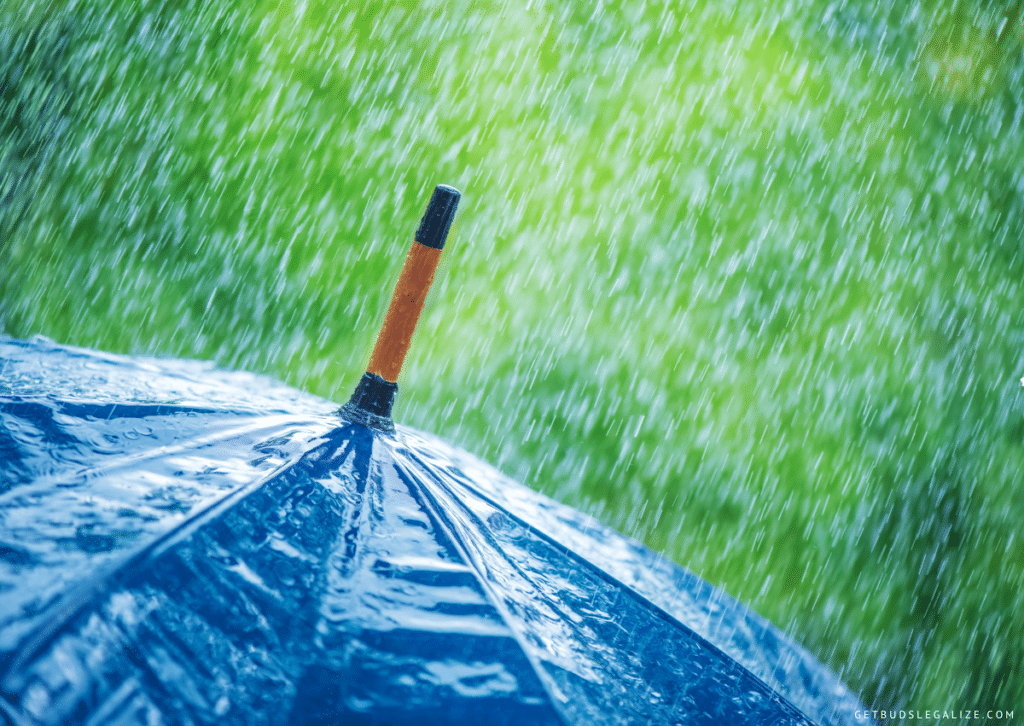
The best way to protect your outdoor cannabis plants from rain damage is to prepare them in advance. Here are some tips that may assist you in achieving that goal:
- Choose cannabis strains that are resistant to mold and pests, such as sativas or hybrids.
- Plant your cannabis in pots or raised beds that allow for good drainage and air circulation.
- Use a trellis or stakes to support your plants and prevent them from falling over.
- Install a greenhouse or a tarp over your cannabis cultivation to shield them from heavy rain and wind.
- Monitor the weather forecast regularly and adjust your watering schedule accordingly.
- Check your plants daily for signs of mold, rot, pests, or nutrient deficiencies.
Bottom Line
Rain isn’t always harmful to outdoor marijuana growers, but it can cause serious problems if not managed properly. By following these seven first aid tips, you can save your outdoor plants from rain damage and save your cannabis crop from disaster. Thanks for reading our post and don’t forget to follow us on our social media.
Happy growing!
FAQs - First Aid Tips for Cannabis Plant Damage
Potassium bicarbonate is a natural fungicide that can help prevent and treat bud rot and powdery mildew by raising the pH of the plant surface and creating an unfavorable environment for fungal growth. Potassium bicarbonate is also safe for humans and beneficial insects.
To use potassium bicarbonate as a preventive measure, you should spray it on your plants once every 7 to 10 days during the flowering stage, when your buds are most susceptible to mold. You should spray it in the morning or evening when the temperature is cooler and the sun is not too strong. You should also avoid spraying it on wet plants or when it is raining, as this can reduce its effectiveness.
To use potassium bicarbonate as a treatment, you should spray it on your infected plants as soon as you notice any signs of mold. You should spray it thoroughly on all parts of the plant, especially the buds. You should repeat this process every 2 to 3 days until you see no more mold.
There is no definitive answer to this question, as different strains of cannabis plants may have different tolerances to rain. However, as a general rule of thumb, you should avoid exposing your plants to more than 12 inches of rain per month during the flowering stage.
Bud rot is not easy to spot in its early stages, as it starts on the stem inside the bud and works its way outward. You may notice some signs of bud rot on the surface of your buds, such as:
- Discoloration: Bud rot can cause your buds to turn brown, gray, or black, depending on the stage of infection.
- Wilting: Bud rot can make your buds lose their shape and structure, becoming limp and droopy.
- Odor: Bud rot can produce a musty, damp, or sour smell that is different from the normal aroma of your buds.
- Texture: Bud rot can make your buds feel wet, slimy, or mushy when you touch them.
To confirm if you have bud rot, you need to break them apart and inspect the inside. If you see white, gray, or black fuzzy mold growing on the stem or the bud tissue, you have bud rot. You may also see some dark spots or holes where the mold has eaten through the bud.
To make a potassium bicarbonate solution, you need to mix 1 tablespoon of potassium bicarbonate with 1 gallon of water. You can also add some liquid soap or horticultural oil to help the solution stick to the plant’s surface.
Besides potassium bicarbonate, there are some other natural remedies that can help prevent and treat fungal infections in marijuana plants, such as:
- Neem oil: This is an organic insecticide and fungicide that can kill fungal spores and prevent them from germinating. It also repels common cannabis pests (red spider mites, fungus gnats, leaf miners, broad mites, russet mites, etc.) and boosts plant immunity. You can spray neem oil on your plants once a week throughout their life cycle.
- Hydrogen peroxide: Hydrogen peroxide is a powerful oxidizer that can kill fungal cells and disinfect wounds. Hydrogen peroxide also increases oxygen levels in the soil and stimulates root growth. You can spray hydrogen peroxide on your plants once every 2 weeks during the vegetative and flowering stages.
- Baking soda: Baking soda is another alkaline substance that can raise the pH of the plant surface and inhibit fungal growth. Baking soda also acts as a mild abrasive that can remove fungal spores from the plant surface. You can spray baking soda on your plants once every week during the flowering stage.
- Apple cider vinegar: Apple cider vinegar is an acidic substance that can lower the pH of the plant’s surface and create an unfavorable environment for fungal growth. Apple cider vinegar also contains beneficial enzymes and bacteria that can improve soil health and plant immunity. You can spray apple cider vinegar on your plants once every week during the flowering stage.
To make any of these solutions, you need to mix 1 teaspoon of neem oil, hydrogen peroxide, baking soda, or apple cider vinegar with 1 quart of water. You can also add some liquid soap or horticultural oil to help the solution stick to the plant’s surface.
To make a BT solution, you need to mix 1 teaspoon of BT powder with 1 gallon of water. You can also add some liquid soap or horticultural oil to help the solution stick to the plant’s surface.
The best way to prevent mold and bud rot is to avoid excessive moisture and humidity in your growing area. You can do this by:
- Choosing a location that has good drainage and air circulation
- Monitoring the weather forecast and moving your plants indoors or under cover if heavy rain is expected
- Shaking off the excess water from your buds after a rain
- Drying your plants with a fan if the weather is still humid and cloudy
- Pruning your plants to improve the airflow and light penetration in your canopy
- Spraying your plants with a fungicide such as potassium bicarbonate or neem oil
Rain can wash away some of the nutrients from your soil, leaving your plants hungry and weak. To prevent this, you should:
- Use organic fertilizers that are slow-releasing and water-soluble
- Apply a foliar spray of seaweed extract or fish emulsion to boost your plants’ immunity and metabolism
- Test your soil pH regularly and adjust it if needed
- Avoid over-watering or under-watering your plants
Drying your buds properly is crucial for preserving their quality and potency. If you harvest your buds in rainy weather, you should:
- Trim off any excess leaves and stems
- Hang your buds upside down in a dark, dry, and well-ventilated room
- Use a dehumidifier or a fan to control the humidity and airflow
- Check your buds daily for signs of mold or rot and remove them if needed
- Dry your buds for 7 to 10 days until they snap when bent
We rely on our partners to provide you with the best products and services. By purchasing from them, you support our website and get high-quality products. Thank you for being part of our community!
ILGM Fertilizer

- From seedling to harvest, give your plants everything they need.
- Enough for feeding at least 5 plants.
- Discounted Package Deal
- Works well in soil, hydroponics, and other growing mediums.
- The best way to treat your plants
ILGM Plant Protector

- Protect your cannabis from diseases and harmful pests.
- Contains three 20 ml bottles.
- Enough supplies to protect 20 plants.
- It can be used in soil, hydroponic, and all other growing mediums.



